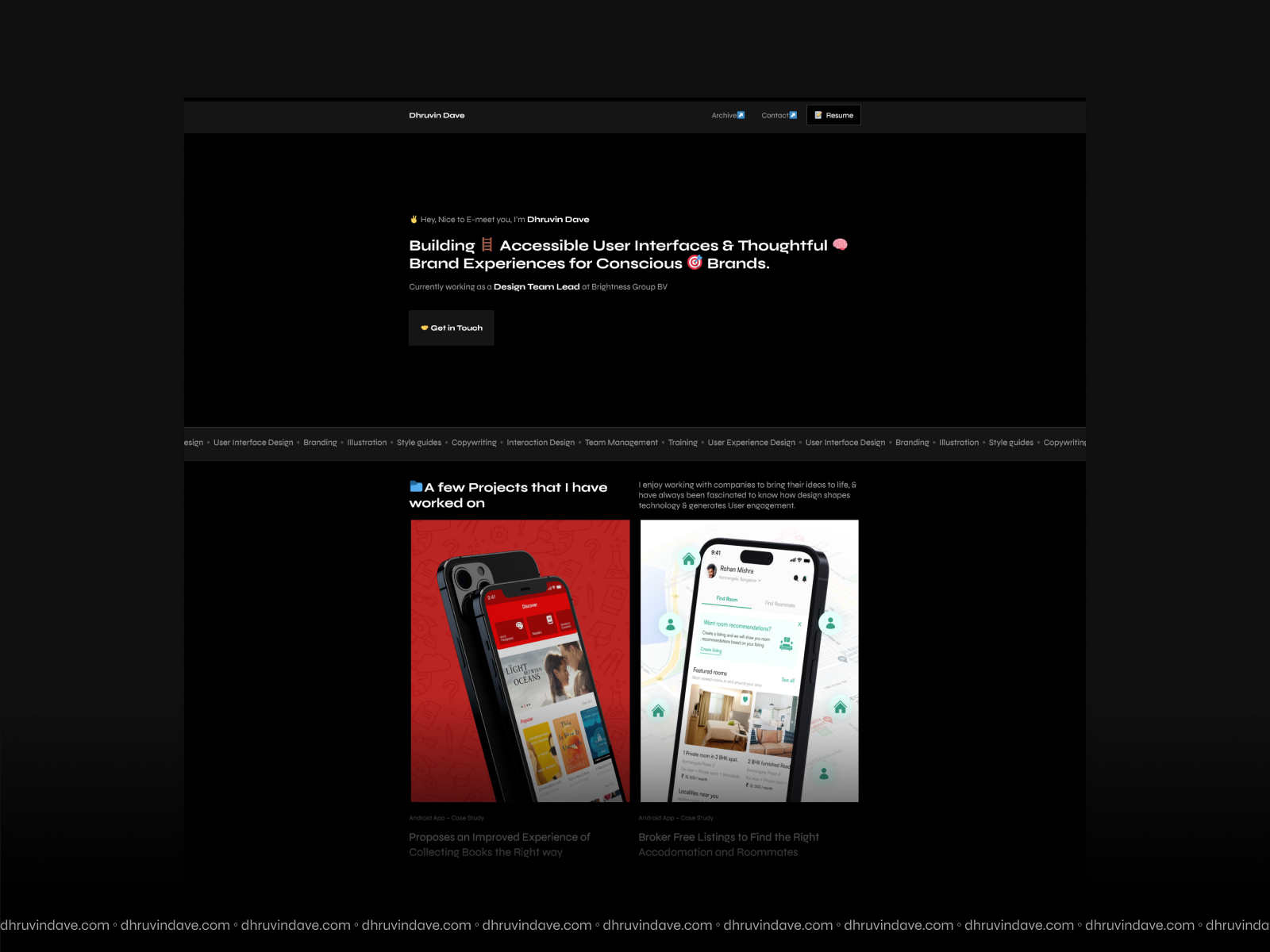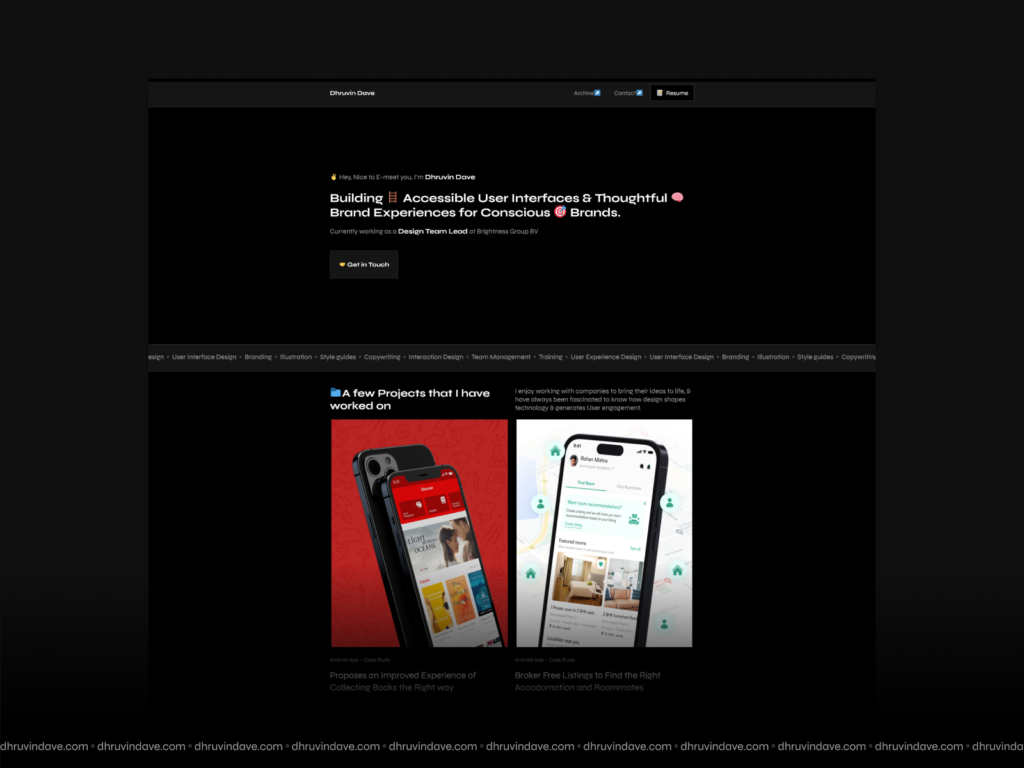Maximizing Your Impact through Branding: Creating a Memorable Design Portfolio

Personally, I have interviewed more than 30 people, and have seen their work via different tools, I can assure you that using separate images in google drive or pdfs is not an optimized way to showcase your work. It’s almost frustrating for the person taking interviews to go through more than 10 portfolios for the 1 position they are recruiting for. Not to mention, these interviews are often squeezed in between their existing responsibilities from projects they are working on, and their other day-to-day tasks.
Any kind of designer, whether they work on graphics, web, illustrations, or branding is expected to be a creative storyteller. Although, the art of storytelling appears to be a lost thing for the current generation of designers. People writing case studies after graduating from the boot camps usually have the same kinds of projects, and follow the same usual double diamond methods. Although, visual representation is an important thing, being able to sell yourself is far more important when it comes to scoring a position as the in-house designer or even picking up freelance work.
To begin, let’s try and understand what a portfolio is first: It’s means of showcasing your work including your client work, side hustles, your conceptual-creative projects, and so on.
🎯 Define your Goals
What do you want your portfolio to achieve? Who is your target audience? Am I looking for freelance work? Am I looking to get a job? Asking these kinds of questions, and getting clear answers right away will give you a better idea going forward and will allow you to plan your next steps. You will also be able to know your target audience.
For example, if you are creating a website to get a full-time job, members of your target audience are recruiters, project managers, seniors of your domain, or product folks In general. What do they look for? your resume, your projects, your wins/losses, your ability to manage people, your ability to handle adverse situations, etc.
📋Gather and select your Projects
When choosing your projects, consider the variety and relevance of the work. It’s a good idea to include a range of different types of projects, such as mobile apps, websites, and software, to demonstrate your flexibility and adaptability as a designer. You should also consider the relevance of the projects to your target audience. For example, if you are targeting a specific industry, it might be helpful to include projects that are related to that industry.
Also, If you are a senior or are looking to apply for a senior role, It is important to showcase soft skills like Client management, Team management, and How you handle adverse situations. What are the things that didn’t go right & how to handle those kinds of situations etc.
🧬 Start with the Basic building blocks of any design
It’s a good idea to find references and create mood boards to help guide your design process. Even if you’re not sure exactly what you want, seeing a variety of typefaces, colors, and layouts can help spark inspiration. Moodboards can be a helpful starting point, as they allow you to experiment with different elements and see how they work together. Remember, as visual beings, we are constantly taking in and processing the things around us, so it’s never a bad idea to have a reference point to start from.
Yes, there are plenty of existing templates available on Figma community, Framer, and Webflow, which a lot of people are already using, So people keep seeing the same templates over & over again, and it stops being Interesting.
📝 Write clear and concise explanations
Accompany each project with a brief summary that explains the context, goals, and outcomes of the project. Avoid using jargon or technical language that might not be understood by everyone.
Project case studies are important for designers because they provide a way to showcase the design process and demonstrate how the designer solved a particular problem. They allow designers to present their work in a structured and professional manner, highlighting the challenges they faced and the creative solutions they developed. Case studies can be an effective way for designers to communicate the value of their work to potential clients or employers, as they provide a tangible example of the designer’s skills and abilities. Additionally, case studies can be useful for designers to reflect on their own work and identify areas for improvement.
🗳 Test and Iterate
Show your portfolio to friends, peers, and potential employers to get feedback and see if it effectively communicates your skills and experiences. Use this feedback to make any necessary updates or revisions.
I love the idea from Melody Koh here. where she says Redesign it Over again, & It may sound stupid to some, but I strongly suggest you all do this.
https://medium.com/@melkoh/your-portfolios-are-fucking-boring-293b97ac45c1
I chose to go minimal this time & started big as in all the pages/content I thought were necessary for the initial audit, and then reducing unnecessary information, and repeating it for the next update in the continuous vicious cycle. This went on until I had exactly what I wanted, with the crux of the most important things and a lean design. It made it easier for people to scan as they browsed past the website since nobody has too much time with their shrinking attention span. When you keep reducing content or sections this way, you start to stand out in a way you would’ve never imagined. Your designs that earlier visually looked like the Moodboards start to shift into something new & unique.
🛳 Ship Early
I cannot stress enough when I say this, but you must ship your work out early! I personally have delayed my work knowing it was impactful, knowing it was good, and still not shipping it chasing the illusion of the picture-perfect portfolio.
I saw in a video by Ryan Kao, where he says & I’m Paraphrasing that “The things and details that you see is something only a little amount of people can notice, as not everyone has the same perspective of your work as you, perfection in my mind is how well something does as it is intended to do”.
Creativity is allowing yourself to make mistakes, art is knowing which ones to keep
Scott Adams
You will never be able to showcase what exactly you have in mind. At its very best it will be an approximation that has some flaws. But hey, over time, those flaws will be the mistakes you learn to accept & choose to keep. They might even become your identities which make your work, truly yours.
🤗Conclusion
I have recently completed my 4th portfolio website and I am very proud of it. It’s still a work in progress, obviously. More case studies will come with time. There are parts I still want to improve or simplify. It is one of the best projects with the most creative freedom you will have to personalize it as per your liking! It is a representation of your personality and a chance to flex it too! To wrap it up, I want to add some realizations I had after creating those 4 portfolio websites over the last 7 years.
- Keep it simple! You are eventually going to change it sooner than you think.
- Get rid of thoughts like “Ohh, but I have so little experience!, Look at all the portfolios! They are so amazing! I don’t have that kind of work to showcase!” You can create concept projects & showcase them, your portfolio website can be one of your projects, you solved an issue you had, right? You are welcome! Ship before you are ready & SHIP IT EARLY!!!
- It really made me think & rethink my personal brand in a more structured way! I spent a lot of time writing content initially, For me, almost 60% of the total content, I dumped to simplify things.
- You can always add more projects later! I currently have only 2 projects added & will be adding a few more later on.
- Never skip the research even though you already know your users! If I would’ve assumed based on the common things or some other case studies floating around, I wouldn’t have had so many ways I could share my content online.
- Do not miss originality in your work! Keep on reiterating until you are out of Ideas! Take a break and then go reiterate again.
- What are you afraid of? My first website was live for over a year, and I had only 100–120 visitors. Most of them were just the people at places where I applied for jobs and my friends and family. Just your website is not going to Instantly attract people, there’s a lot more to it! So fret not and just go for it.
I designed and coded this website from scratch
